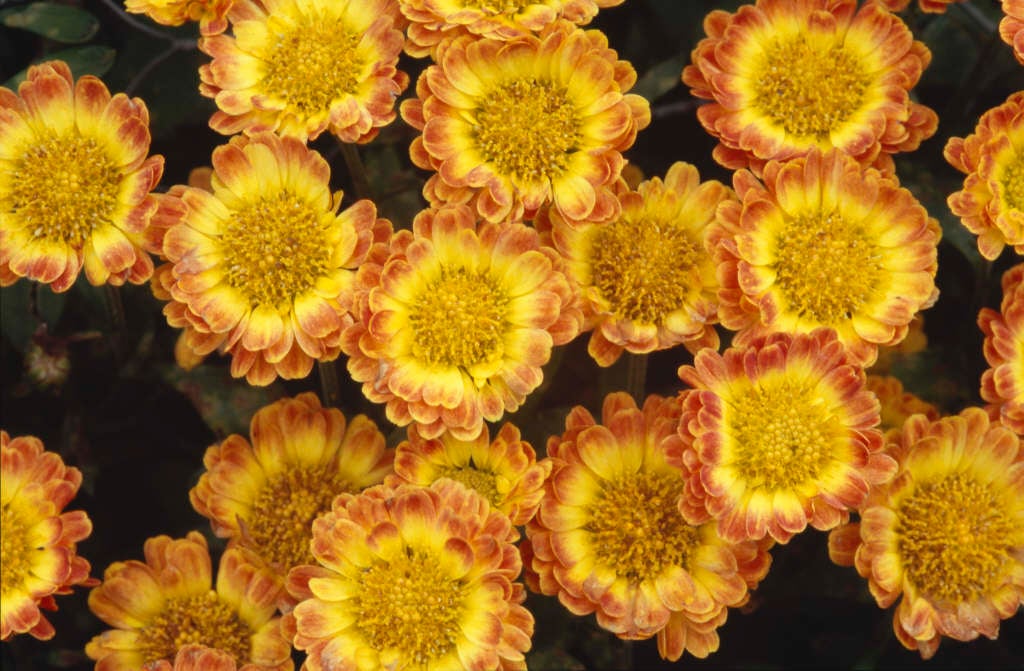Size
Ultimate height
0.1–0.5 metresTime to ultimate height
2–5 yearsUltimate spread
0.1–0.5 metresGrowing conditions
Moisture
Moist but well–drainedpH
Acid, Alkaline, NeutralColour & scent
| Stem | Flower | Foliage | Fruit | |
| Spring | Green | |||
|---|---|---|---|---|
| Summer | Green | |||
| Autumn | Bronze Yellow | Green | ||
| Winter |
Position
- Full sun
- Partial shade
Aspect
West–facing or South–facing or East–facing
Exposure
Sheltered Hardiness
H4Botanical details
- Family
- Asteraceae
- Native to GB / Ireland
- No
- Foliage
- Deciduous
- Habit
- Bushy
- Potentially harmful
- Skin allergen. Wear gloves and other protective equipment when handling
- Genus
Chrysanthemum are erect woody-based perennials with aromatic, pinnately lobed leaves and flowerheads of diverse form, from late summer to late autumn
- Name status
Trade
How to grow
Cultivation
Grow-on young plants starting in a 7.5cm pot in peat-free John Innes No2, potting them on until they have reached a pot size of 23-30cm. At this stage use peat-free JI No3 compost and bring the plants into a cool greenhouse in the autumn minimum 10°C where they are to flower. Water moderately throughout the growing season and feed weekly with a balanced liquid fertiliser
Propagation
Propagate by basal softwood cuttings from overwintered stools in late winter or early spring. Cuttings should be rooted in a peat-free compost the surface of which is covered with dry sand and kept in a temperature of 16°C. Place in a cold frame after first rooting and protect from frost. Harden off in mid spring. Established clumps may be propagated by division in spring.
Suggested planting locations and garden types
- City and courtyard gardens
- Coastal
- Cottage and informal garden
- Patio and container plants
- Flower borders and beds
Pruning
Cut back old stems to 5cm after the flowers have finished
Pests
May be susceptible to aphids, capsid bug, earwigs, eelworms, mealybugs glasshouse red spider mite and glasshouse whitefly
Diseases
May be susceptible to glasshouse grey mould, powdery mildews and chrysanthemum white rust
Get involved
The Royal Horticultural Society is the UK’s leading gardening charity. We aim to enrich everyone’s life through plants, and make the UK a greener and more beautiful place.
